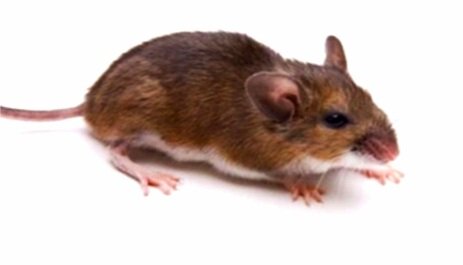
Mouse Control Services
Hide & Squeak
Southern New Hampshire is home to several species of mice; all of which can cause immense damage to structures and pose threats to human health. Mice invade over 20 million homes in the United States, leaving behind waste, urine, and ruined property in their wake. Mice are incessant nibblers - feeding 15 - 20 times each day.
All that nibbling leads to the production of 40 - 100 droppings per day, not to mention the constant dispersal of micro-droplets of urine deposited as they travel. With all waste dispersal, diseases such as Hantavirus and Salmonella, as well as 200 other human pathogens can be carried and deposited by mice. Some mouse species are also a reservoir for the Lyme disease.
A hole the size of a dime (sometimes even smaller) is all that is needed for mice to gain access to a structure. This, coupled with a breeding cycle that can potentially produce a dozen offspring every three weeks, means mice can wreak significant havoc on your property.
Monadnock Pest & Wildlife offers a wide range of mouse control services using the most up-to-date industry standards and materials. Our 30+ years of combined rodent control experience means we can address your rodent issue promptly and professionally.
We offer rodent control solutions for the most common rodent pest species known to inhabit New Hampshire, including House Mice (Mus musculus), White-Footed Mice (Peromyscus leucopus), and the Deer Mouse (Peromyscus maniculatus).
Contact us for a quote or inspection to address your mouse concerns!
The Most Common species of mice we handle:
House Mouse (Photo | Public Domain)
House Mice (Mus musculus)
The House Mouse is regarded as the most common occurring species of nuisance mouse. True to name, unlike their more wild relatives, the house mouse has adapted to almost exclusive habitation around humans. They are identified by their pointed snout, large rounded ears, and a long and hairy tail synonymous with the characteristic traits of mice in pop culture. Their hair coats range from grey and light brown. Their hind legs are considerably shorter than that of some other mice commonly found in New Hampshire.
House mice thrive well under a variety of conditions; they are found in and around homes and commercial structures, as well as in open fields and agricultural lands. Being incredibly adaptable to their environments, availability of food, shelter, and safety tends to determine ideal habitat. One female can birth 5 to 10 litters each year. Breeding occurs throughout the year when their environment allows such.
Size (adult): 3–4 inches
Weight: 1 3⁄8–1 5⁄8 oz
Lifespan (wild): 1 Year (or less)
Commonly Found: Inside homes and commercial buildings.
White-Footed Mouse (Photo | M. Fawver)
White-Footed Mice (Peromyscus leucopus)
White-footed Mice are one of the most abundant of the “new-world” forest dwelling mice in New Hampshire. They are omnivorous, and commonly eat seeds and insects. More timid than House Mice, they tend to avoid humans, but will take up residence inside lower-level floors of homes and apartments, where they build nests and store food.
White-footed Mice are similar to North American deer mice, and may carry hantaviruses, which cause severe illness in humans, as well as being a competent reservoir for the Lyme disease, causing spirochete, Borrelia burgdorferi.
Size (adult): 3.5–3.9 inches
Weight: 0.7–1.1 oz
Lifespan: 1 - 1.5 years
Commonly Found: Forests, agricultural lands, basements, garages, sheds, and barns.
Deer Mouse (Photo | Centers for Disease Control and Prevention)
Deer Mouse (peromyscus maniculatus)
The North American Deer Mouse is another common “new world” forest-dwelling mouse found throughout New Hampshire. Like its relative, the White-Footed Mouse, the deer mouse is also a vector and carrier of diseases such as hantaviruses and Lyme disease.
Although incredibly similar to the White-Footed Mouse. The deer mouse can be distinguished physically by its long and multicolored tail. They have large beady eyes and large ears allowing for exceptional sight and hearing. Their fur coats vary in color from gray to brown. Deer mice have a distinguishable white underside and white feet. They are opportunistic feeders.
Size (adult): 3–4 inches
Lifespan: 1 year
Commonly Found: Tree hollows, grasslands, basements, human dwellings.
Other mouse species found in New Hampshire include:
Meadow Jumping Mouse (Zapus hudsonius)
Woodland Jumping Mouse (Napaeozapus insignis)
Read more about Mice & Rodents on our Pest Blog:
Give us a call:
(603)-784-5828
Not much of a phone talker?
Send us a message and we’ll respond to your inquiry shortly.
We check our email messages promptly!






Whether its soiled insulation posing health risks and impacting coveted R-value for home heat efficiency, hazardous electrical wiring gnawed by persistent rodents, or structural damage caused by wood-destroying and boring insects; what you can’t see above you may pose serious problems.